The new major exhibition at Palazzo Strozzi Anish Kapoor was presented today. Untrue Unreal, which can be visited from October 7, 2023 to February 4, 2024, curated by Fondazione Palazzo Strozzi General Director Arturo Galansino and conceived and realized together with the artist. An itinerary among monumental installations, intimate environments and disturbing forms is intended to create an original and engaging dialogue between the art of Anish Kapoor (Mumbai, 1954), architecture and the public. Indeed, visitors will have the opportunity to come into direct contact with Kapoor’s art through historical and recent works, including a new production specially conceived in dialogue with the architecture of Palazzo Strozzi’s Renaissance courtyard.
In Anish Kapoor’s art, the unreal(unreal) mixes with the improbable(untrue), transforming or negating the common perception of reality. He invites us to explore a world in which the boundaries between true and false dissolve, opening up to the dimension of the impossible. His works transcend their materiality. Pigment, stone, steel, wax and silicone, to name but a few of the materials he works with, are manipulated, sculpted, polished, saturated and treated questioning the boundary between plasticity and immateriality. Color in his works is not simply matter and hue, but becomes an immersive phenomenon, endowed with its own volume, spatial and illusory at the same time.
“Anish Kapoor has worked at Palazzo Strozzi creating a totally new exhibition project,” said Arturo Galansino. “In the wake of our series of exhibitions dedicated to the major protagonists of contemporary art, Kapoor has confronted Renaissance architecture. The result is totally original, almost a kind of dialectical opposition, where symmetry, harmony and rigor are challenged and the boundaries between material and immaterial dissolve. In the rational geometries of Palazzo Strozzi, Kapoor invites us to lose and find ourselves by questioning what is untrue or unreal.”
The exhibition unfolds between the rooms of the piano nobile and the Renaissance courtyard of Palazzo Strozzi. Standing out in the center of the courtyard isVoid Pavillion VII (The Void Pavilion VII, 2023), a new work by Anish Kapoor specially conceived for the courtyard of Palazzo Strozzi and created thanks to the support of the Hillary Merkus Recordati Foundation. The large pavilion stands at the same time as a point of departure and landing in the dialogue between Kapoor’s art and Palazzo Strozzi. Upon entering this space, visitors are confronted with three large empty rectangular forms in which the eye is invited to immerse itself, in a meditative experience of space, perspective and time, intended to disrupt the rational geometric structure and emblematic harmony of the Renaissance building.
On the main floor, the exhibition kicks off with the iconic work Svayambhu (2007), a Sanskrit term for that which is autonomously generated, the counterpart of Christian acheropite images not painted by a human hand. The work proposes a dialectical reflection between emptiness and matter: a monumental block of red wax moves slowly between two rooms of Palazzo Strozzi, shaping its formless matter in relationship to the architecture it passes through. This work stands in dialogue withEndless Column, 1992, which makes explicit reference to Constantin BrâncuÈ™i’s famous sculpture of the same name. Kapoor’s red pigment column seems to transcend the limits of the room’s floor and ceiling, creating a sense of ethereal architectural physicality, a metaphor for the link between earth and cosmos. On a different scale, but with the same spatial and architectural effect, stands ToReflect anIntimate Part of the Red, 1981, a seminal work in Kapoor’s career: a striking set of yellow and red pigment forms emerging from the floor, fragile, almost otherworldly but powerfully present.
InNon-Object Black (Non-Object Black, 2015), characterized by the use of Vantablack, a highly innovative material capable of absorbing more than 99.9 percent of visible light, Kapoor questions the very idea of a physical, tangible object, presenting forms that dissolve as the gaze passes. In these revolutionary and impactful works, the artist invites the audience to question the very notion of being, proposing a reflection not only on objecthood but on the immateriality that permeates the world. This strong experience of the non-object continues in GatheringClouds, 2014, monochrome concave forms that absorb the surrounding space into a meditative darkness.
Flesh, organic matter, body and blood are recurrent and fundamental themes in Kapoor’s research. An entire room is devoted to works in which the artist confronts what appears to be a gutted and ravaged intimacy in an entropic and abject dimension of the body. The large steel and resin sculpture A Blackish FluidExcavation, 2018, evokes a writhing uterine hollow that traverses the space and the viewer’s senses. In the works displayed on the wall, Kapoor instead combines paint and silicone, resulting in fluid forms that appear as visceral masses that seem to pulsate with a life of their own. The structures twist, expand and contract, proposing a sense of continuous movement and transformation, but also a strong tactile sensuality that emerges from the interplay between the sensations of softness and solidity, organicity and linearity. Evoking these suggestions are the very titles of the works:First Milk, 2015;Tongue Memory, 2016; Today You Will Bein Paradise, 2016;Three Days of Mourning, 2016.
In contrast, the traditional notion of boundaries and the dichotomy between subject and object are central themes in mirror works such asVertigo (Vertigo, 2006),Mirror (Mirror, 2018) andNewborn (Newborn, 2019), inspired once again by BrâncuÈ™i’s formal experiments. Through the reflections of these works, what is mirrored enters an illusory dimension that seems to belie the laws of physics. These large sculptures reflect and deform the surrounding space and enlarge, reduce and multiply it, creating a feeling of unreality and destabilization and drawing the viewer into the indefinite space they emanate.
The exhibition itinerary on the Piano Nobile ends with the room dedicated to the workAngel (Angel, 1990), large slate stones covered with layers of deep blue pigment. These heavy boulders appear contradictory to their incorporeal appearance: in fact, they seem to solidify the air and suggest the transformation of slabs of slate into pieces of sky, thus transfiguring the idea of purity into a physical element. Kapoor alters the strong materiality of the work and thus evokes a sense of mystery that responds to the esoteric matrix ambition of achieving the fusion of opposites.
The exhibition is promoted and organized by Fondazione Palazzo Strozzi. Main Supporter: Fondazione CR Firenze. Supporters: City of Florence, Tuscany Region, Florence Chamber of Commerce, Committee of Partners of Palazzo Strozzi. Main Partner: Intesa Sanpaolo. With the contribution of Città Metropolitana di Firenze. With the support of Maria Manetti Shrem and Hillary Merkus Recordati Foundation. Thanks to Galleria Continua. The exhibition is part of Florence Art Week, an initiative promoted by the City of Florence scheduled from September 28 to October 8, 2023.
For info: www.palazzostrozzi.org
Photos by Ela Bialkowska / OKNO studio
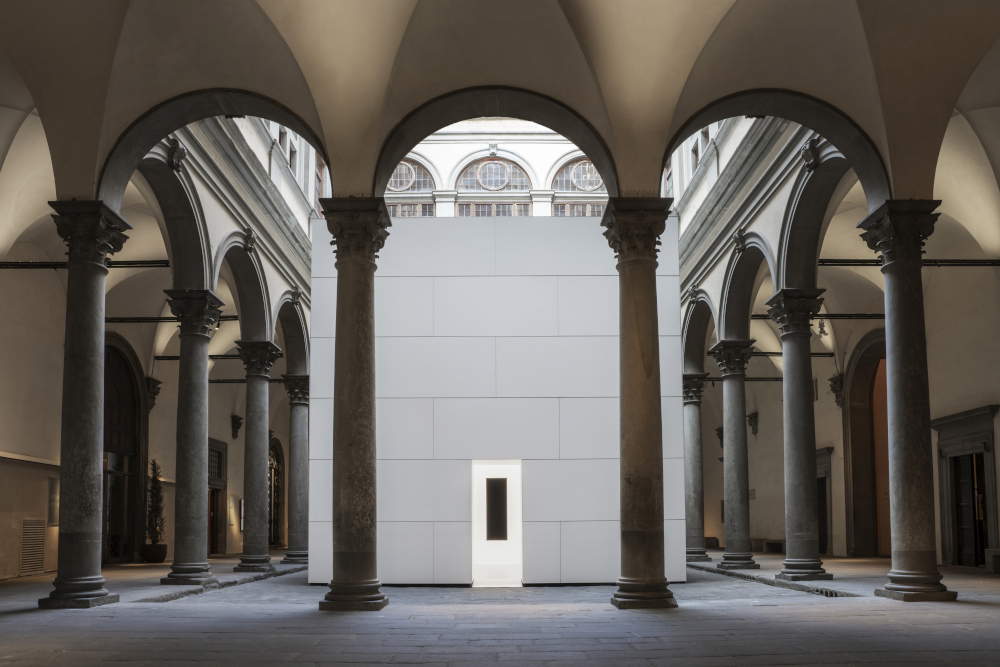
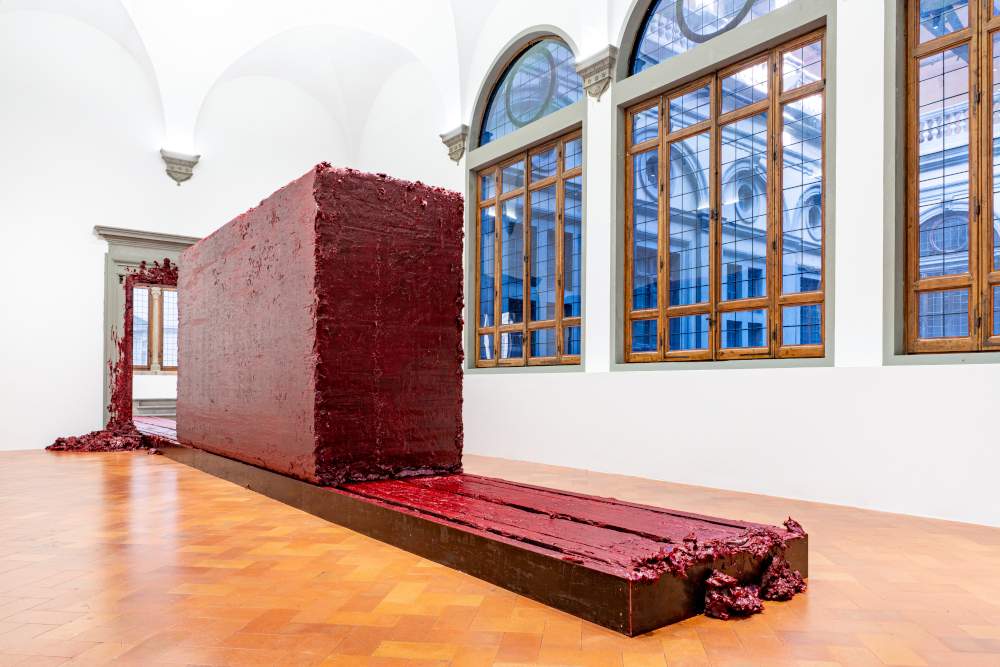
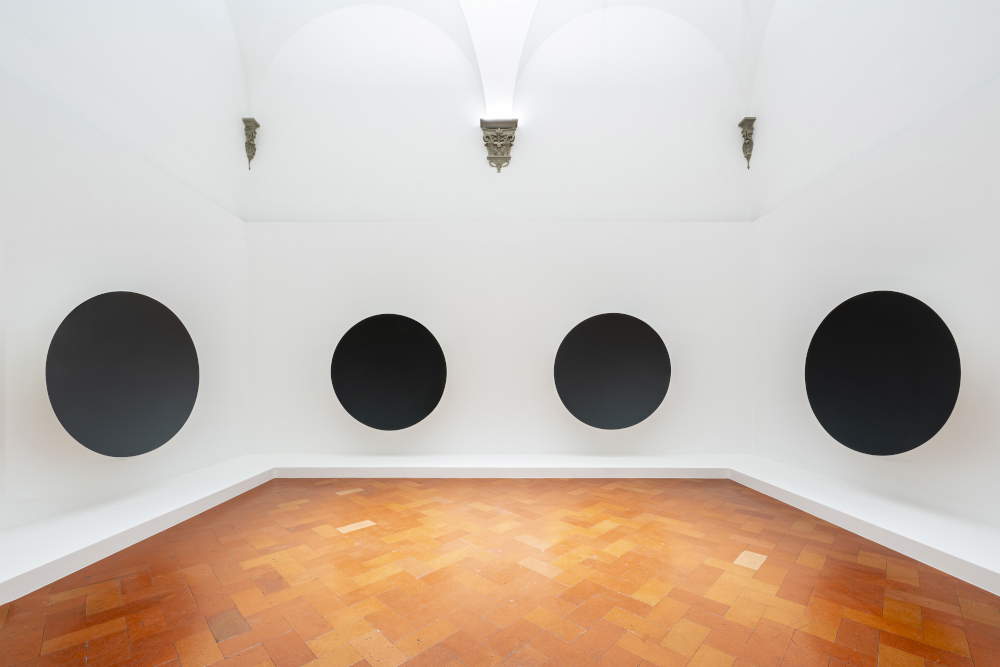
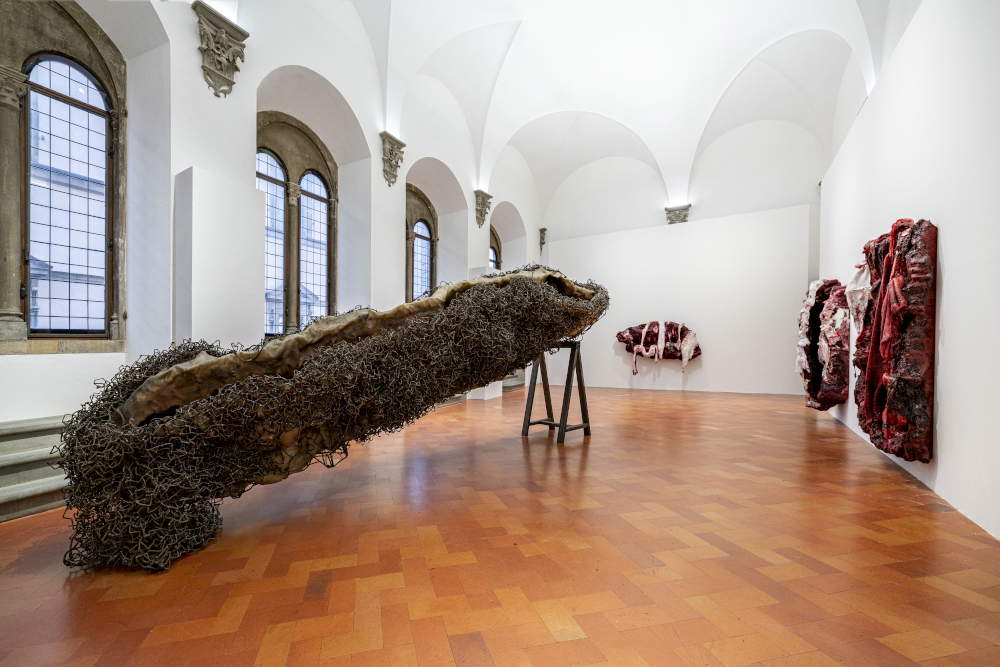
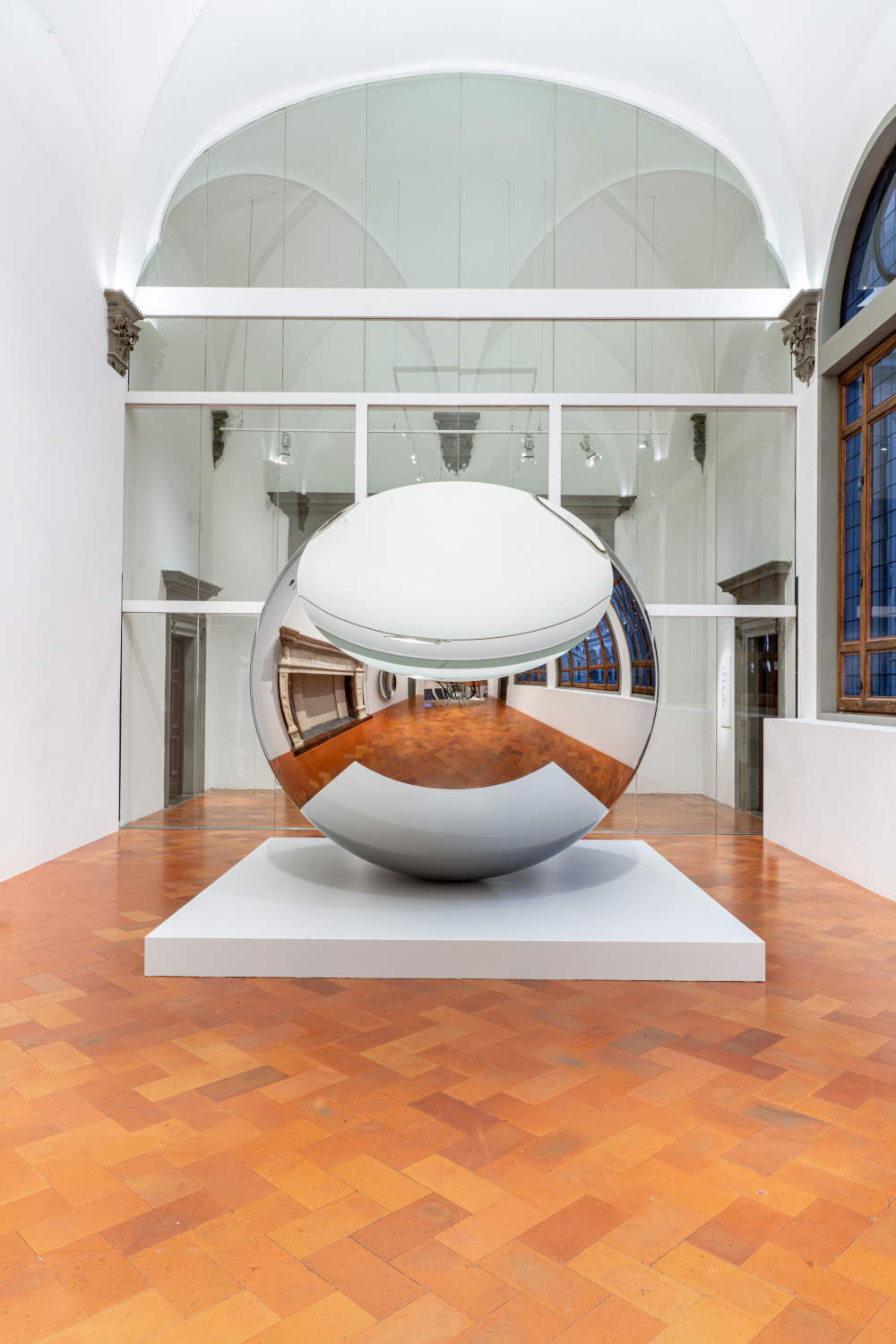
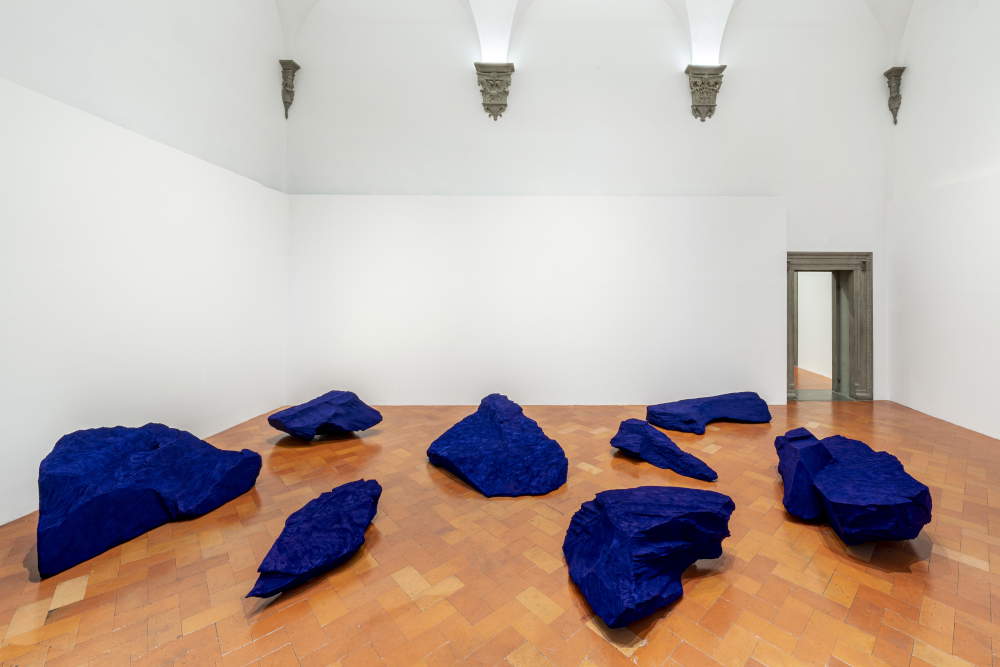
 |
| Anish Kapoor's major exhibition at Palazzo Strozzi unveiled today. Here's how it's set up |
Warning: the translation into English of the original Italian article was created using automatic tools. We undertake to review all articles, but we do not guarantee the total absence of inaccuracies in the translation due to the program. You can find the original by clicking on the ITA button. If you find any mistake,please contact us.